Features of soaring profiles
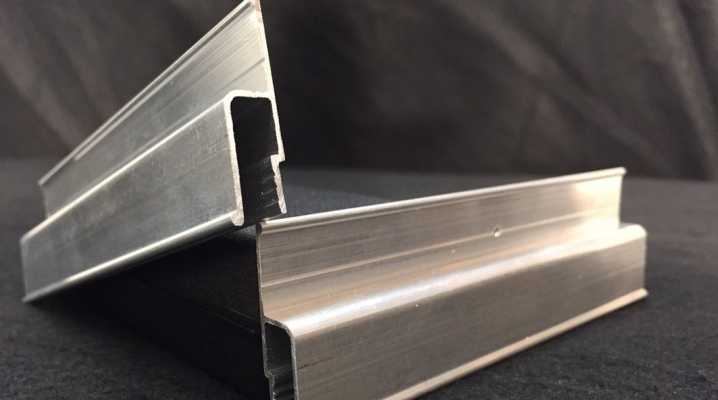
Currently, the soaring ceiling is gaining more and more popularity. It is one of the types of stretch coating. This canvas is fixed using the same special floating profiles, which are mainly made of aluminum. The article will discuss the features of such fasteners, as well as what types they can be.
Description and application
Currently, the soaring ceiling is becoming increasingly popular. This canvas is fixed using the same special floating profiles, which are mainly made of aluminum. The article will discuss the features of such fasteners, as well as what types they can be.
Floating metal profiles are most often used for fabric stretch ceilings and PVC canvases, they are attached with a slight indentation from the surface of the walls, which creates an unusual effect. The LED installation will subsequently be placed in the provided gap.
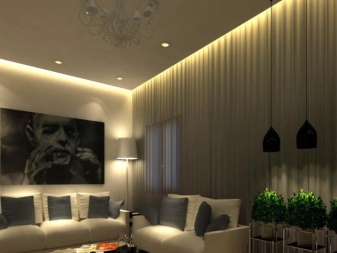

The fasteners themselves are equipped with a special groove, which is designed for attaching the LED strip, or another fixture for fastening. In this case, the base of the tape will practically not be visible. Many models are made with special diffusers that make the light from the source softer and more pleasant. When using such a profile, most often you will not need to purchase a decorative plug.
When decorating soaring ceilings, you may need such profiles of different types, including dividing, wall, ceiling, profiles for the transition of levels with illumination.
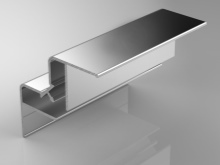
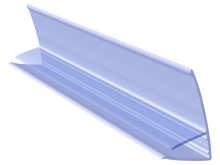
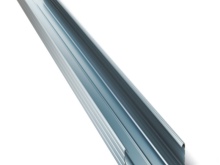
Species overview
These aluminum profiles can be of several basic varieties. They all differ from each other in their size and some other features. Let's highlight the most common options.
-
Model KP4003... This profile is a standard design in which the harpoon fixation point is located above the illumination slot, so the ceiling sheet is stretched over the LED installation, making it almost invisible. When using this model, the canvas will also act as a kind of lamp that scatters light and makes it softer. In this profile, the backlight is installed as simply as possible with just one click, so if necessary, the LED can be easily changed. The height of this profile is 6 cm. The product has a wall-mounted appearance, so it will provide illumination of the entire perimeter of wall coverings.
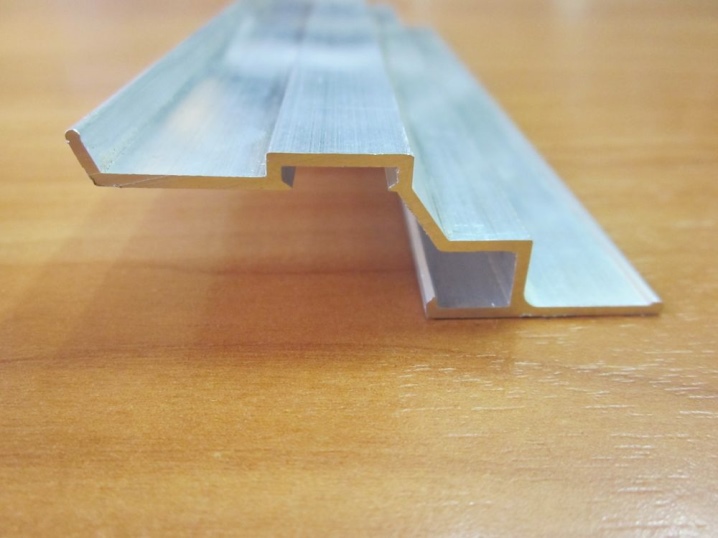
- Model KP2301... This metal ceiling profile comes in one set with a decorative cover. It is made of a special light-transmitting material, it allows you to make the dots from the LEDs much less noticeable, and the light - soft and diffused. In order to replace the LED strip, you do not have to disassemble the entire structure, you just need to remove the decorative insert. When using KP2301, the light will be directed downward, which provides a brighter glow. The profile height reaches 4.5 cm.
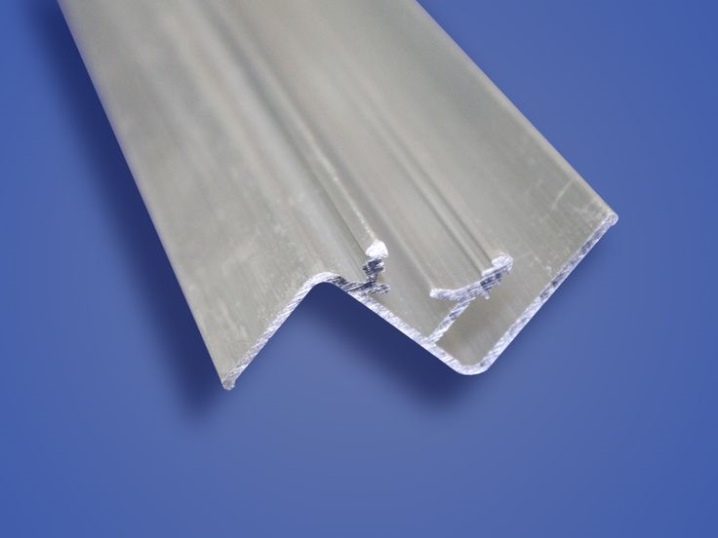
- KP2429... This aluminum ceiling profile has a groove for fixing the LED line, it is placed flush with the ceiling itself. KP2429 makes the tape itself almost invisible, and the light diffuses. No bezel is required with this model.A small gap will form between the wall and the stretched material, but it will look quite aesthetically pleasing in any interior. In the event of a burnout of the light sources, it will not be necessary to disassemble the ceiling structure - it can be replaced with almost one movement. The profile height is 3.5 cm.
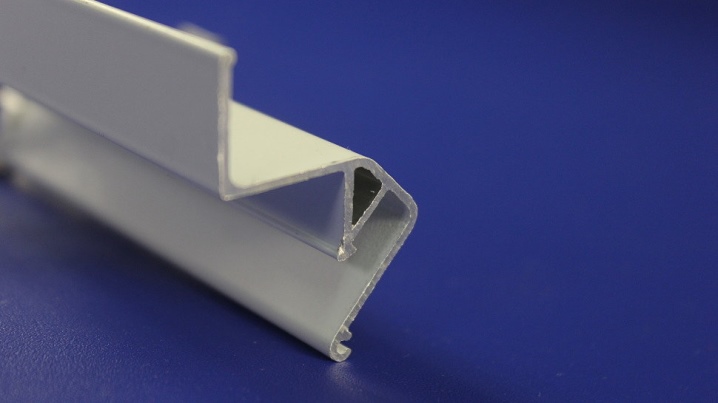
- KP4075... This dividing ceiling profile has a special niche in the central part, into which LED lighting can be built in. After that, it is neatly covered with a film or by the stretch fabric itself. This design creates a streak of soft light.
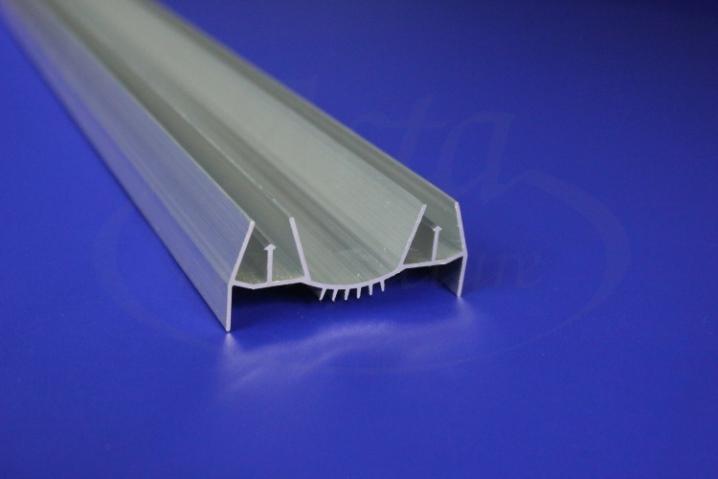
In addition to the above varieties, there are also special models designed for ceiling level transitions with LEDs. These include products KP2 and NP5.
Two-layer ceiling structures are fixed with special profiles that differ in their size and method of fixing (to the ceiling or wall).
To organize the "starry sky" system, the PL75 model is used. It is equipped with a groove into which the LED strip is fixed during installation. In this case, the product is closed with an insert, which makes the light diffuse.
All these profiles must be coated with protective compounds during the manufacturing process. Sometimes a special paint is also applied to the surface of products. (usually white or black).
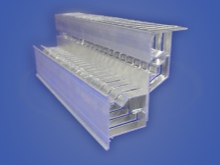
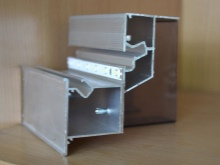

Installation diagram
In order to connect such a profile to the surface, first you need to do all the necessary preparatory work. For this, the surface of the ceiling is completely cleaned and primed. And also you will need to align the wall part along the entire perimeter.
After that, a niche is marked on the surface for the structure and the lines of the LED installation. Then you should prepare the profile itself. First, they cut down and align the corners, later they clean the cuts and prepare the holes for installation. To do this, you can use a screwdriver and a drill of the appropriate diameter.
The installation of the aluminum profile is carried out from opposite corners and gradually moves along the entire perimeter of the coating. At the same time, a connection is made to the wall using dowels.
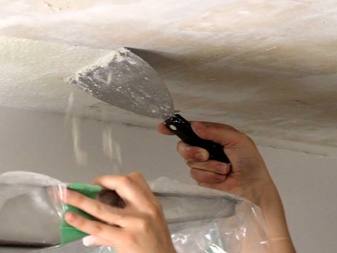
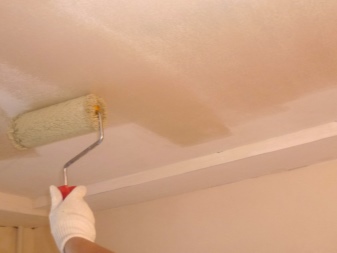
At this stage, the LED strip is also installed in a specially provided profile groove. In this case, additional fixation with construction glue or clips is not required, because the tape will firmly and tightly connect with the profile itself, after which it all snaps into place.
In the process of such installation, it is necessary to monitor the evenness of all joints. And also during the installation, there may be a need to dock the floating profile with the usual one. In this case, you need to follow the general design - the structure should look aesthetically pleasing in any case. Previously, you can assemble a small template from the sections of the profiles in order to clearly verify this. A reliable connection can be made using construction glue, as well as any small fasteners.
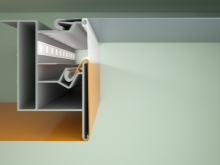
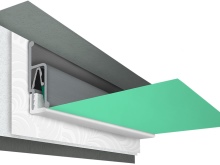
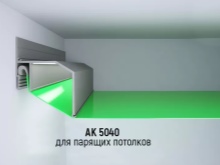
Remember that floating profiles should only be used to install fabric and PVC canvases with LED strips. As a rule, they are not used for standard stretch ceilings and rods.













The comment was sent successfully.